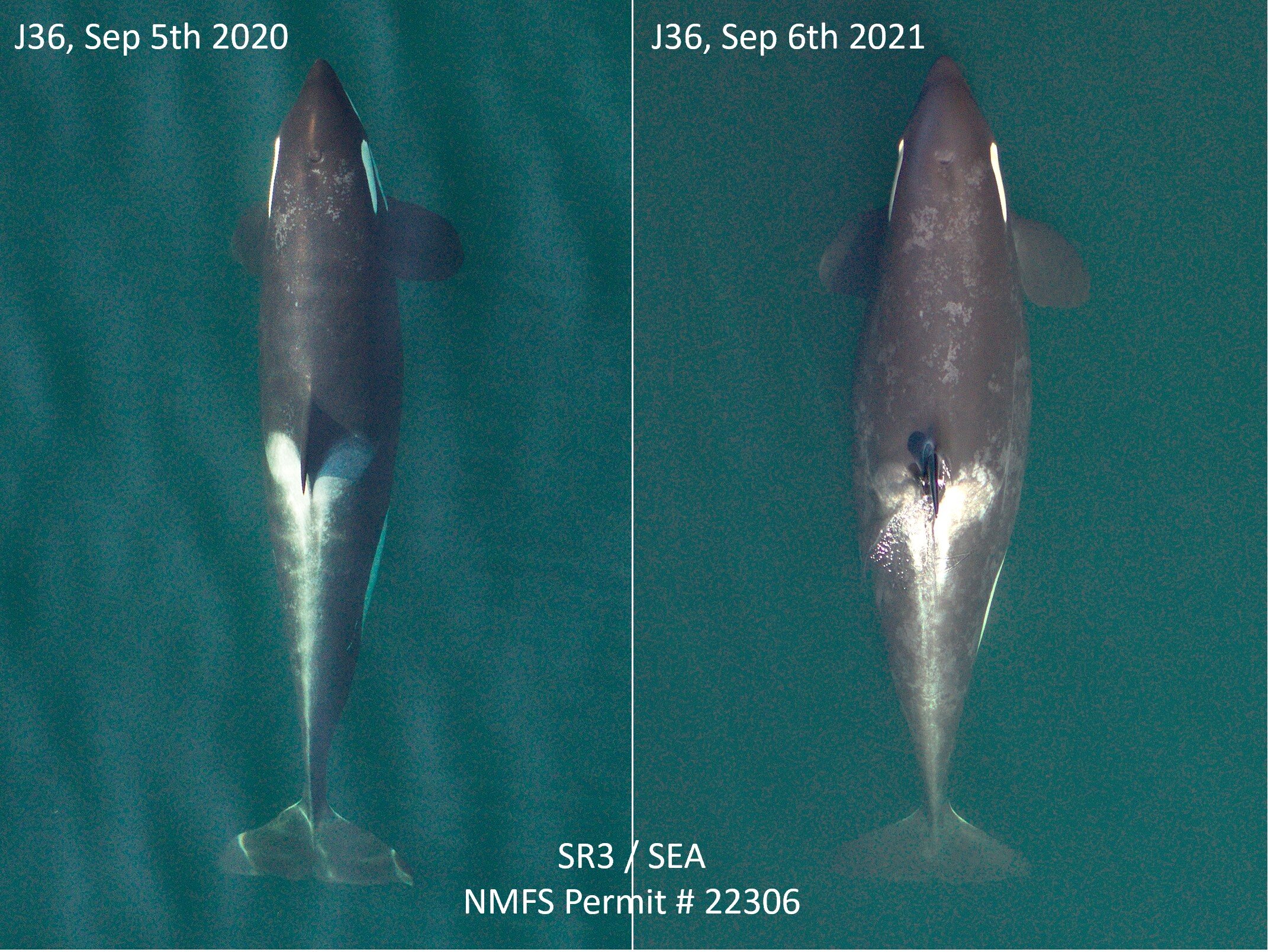SR3’s Dr. Holly Fearnbach and Dr. John Durban from Southall Environmental Associates (SEA) have had a busy start to their annual September monitoring of the health of endangered Southern Resident killer whales (SRKWs). Assisted ably in the field by Jessica Farrer and Dylan Jones, the team has already been able to use their custom octocopter research drone to non-invasively collect aerial images of all SRKWs that have been sighted around the San Juan Islands this month (63/74 individuals in the population). These images are being measured in photogrammetry analyses to add to the 13-year time series of size and body condition for each individual whale.
These quantitative health metrics are actively being used to support adaptive conservation measures to aid in the recovery of the population. A recent publication coauthored by Holly and John highlighted the links between our body condition measurements of SRKWs, the abundance of their Chinook salmon prey, and the subsequent mortality risk to the whales. Notably, individuals measured to be in poor body condition having an elevated risk of mortality, showing that our identification of condition can serve as an early warning system to facilitate enhanced conservation measures. In response to photogrammetry measurements conducted by the SR3 team in near real-time this month, Washington’s Department of Fish and Wildlife (WDFW) has recently adopted two emergency rules. In early September we identified that a calf in J pod, J56, had declined into poor condition, and as a result WDFW designated this whale as vulnerable and ruled to prevent commercial whale watching from approaching within one-half nautical mile of J56 or her group, to protect her ability to successfully forage. Then last week we identified three females in J pod (J36, J37, J19) that we measured to have width profiles indicative of late-stage pregnancy. WDFW also designated these whales as vulnerable and adopted similar approach restrictions to help ensure that these females are able to meet their elevated nutritional needs and to give them best chance of birthing success and survival.
We will continue monitoring the growth and body condition of SRKWs during this core month of September research, and opportunistically throughout the year, to continue to provide these important health data and support adaptive conservation management.
Aerial images documenting the shape change during pregnancy of an adult female Southern Resident killer whale (J36), collected during non-invasive health research. These images were collected using a remotely-piloted octocopter drone that was flown >100ft above the whale in September 2020 under NMFS Research Permit #19091 and September 2021 under NMFS Permit # 22306.

